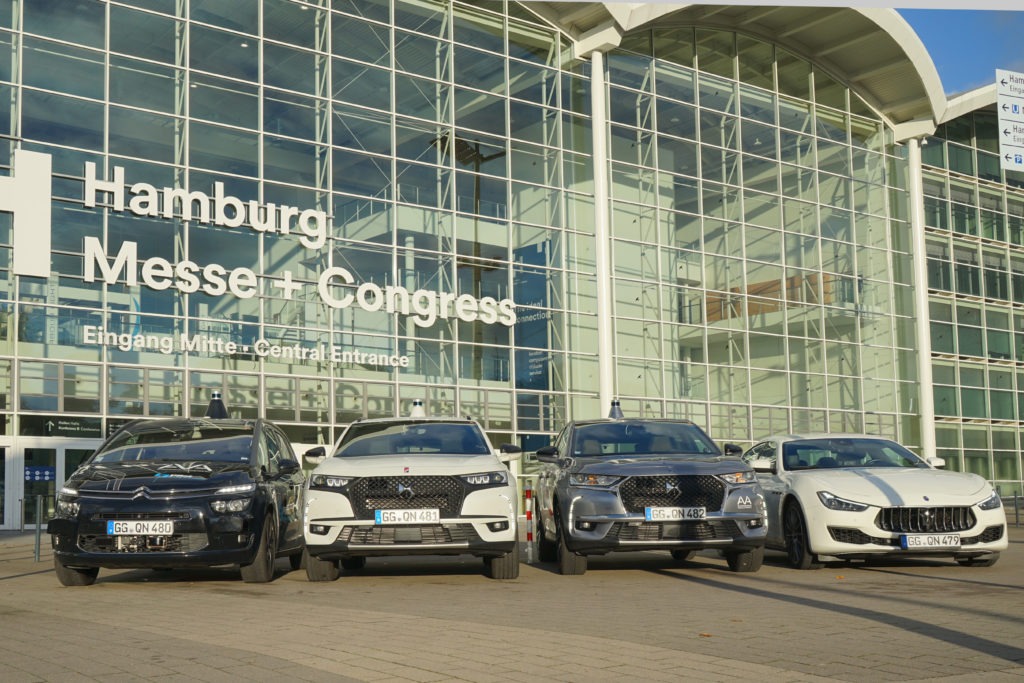L3Pilot showcases autonomous driving and automotive collaboration
18 October 2021

L3Pilot asserts itself as Europe’s first comprehensive pilot of autonomous driving on public roads. In conjunction with the ITS Congress event, the project’s four years of development were put to the test on Hamburg’s roads last week.
Co-funded by the European Commission under the Horizon 2020 programme, L3Pilot is the result of massive collaboration across the automotive value chain, from governmental bodies to carmakers and research institutes to insurers. Companies involved in the project include Volkswagen (VW) Group, BMW Group, Stellantis, Ford, Honda, Jaguar Land Rover (JLR), Mercedes-Benz, Renault, Toyota, and Volvo Cars.
Kick-started in September 2017 and costing approximately €68 million, L3Pilot has enabled large-scale testing of intelligent vehicle systems on a pan-European scale. Fourteen partners conducted practical tests between April 2019 and February 2021.
International effort
These autonomous-driving pilots involved seven countries: Belgium, Germany, France, Italy, Luxemburg, Sweden, and the UK. This included two cross-border activities, one between Germany and Luxemburg, and the other linking Germany, Belgium, and the UK.
‘We believe that these international projects, conducted on a large scale and involving many partners, are very important to help ensure that our customers are confident that autonomous technologies are safe and reliable before we introduce them into the market. They are an integral part of our end-to-end customer-centric software strategy,’ said Yves Bonnefont, chief software officer at Stellantis.
Test specifics
L3Pilot focused on SAE Level 3 functions on the motorway and in urban traffic, while SAE Level 4 systems were examined in parking and close-distance scenarios. Research revealed the main benefit of SAE Level 3 systems was increased levels of safety. Meanwhile, hands-off motorway driving, as well as urban and parking functions can provide social benefits which exceed the social costs of installing it.
The project equipped 70 vehicles, with a test fleet made up of 13 different brands. These cars covered over 400,000km on motorways, with 200,000km in an autonomous mode and the other half driven by a human, providing a comparative baseline. More than 22,000km were travelled autonomously in urban traffic conditions. During these drives, the focus was user experience, utilising over 1,000 participants in piloting and virtual tests.
Additionally, L3Pilot carried out virtual supplementary tests with some 600 subjects. This provided a better understanding of user experiences that would have been more difficult to address in large-scale pilots owing to safety and legal requirements.
Autonomous guidelines
One of the major achievements of this project was a code of practice for the development of automated-driving functions (CoP-ADF). Essentially, this supplies guidelines for supporting the design, development, verification, and validation of autonomous-driving technology.
‘Automated driving has a huge potential to make mobility safer, more efficient and more comfortable. The L3Pilot partners made great efforts to pursue piloting and met the project goals – despite the tremendous pandemic crisis,’ said L3Pilot coordinator Aria Etemad of Volkswagen.
‘This shows the outstanding commitment of our Europe-wide partner network. One of our major achievements is a code of practice for the development of autonomous driving functions. It provides guidelines that will support the development of safe and reliable Autonomous driving systems.’
All roads lead to Hamburg
This testing led to Hamburg and the ITS Congress. Attendees got a first-hand experience of autonomous technology either on the motorway or in urban conditions.
A 15-to-20-minute motorway trip could be taken in a range of vehicles including a BMW X5, a Honda Legend, a Maserati Ghibli, or a Ford Focus. Here, demonstrator cars followed lanes and adjusted their speed according to various factors like legal limits and other vehicles. They could also overtake automatically under safe conditions.
In the urban demonstrations, attendees got a five-to-seven-minute drive on the TAVF test track, in either a VW eGolf or Passat. These vehicles drove in a conditional autonomous mode, taking over all dynamic driving tasks. Both experiences utilised safety drivers for when the vehicles needed a human to take over.
Demonstrations like these are an attractive novelty as mobility shows, like ITS Congress, find their feet in a world still getting to grips with the pandemic. They offer attendees a glimpse into a complex world of autonomous development and possibilities. But as attention-grabbing as these sideshows are, they must not pull focus from the larger achievements of programmes like L3pilot. CoP-ADF has the potential to be foundational for future autonomous systems, laying the groundwork for what could one day be the car of the future, not just the car of the mobility show.



